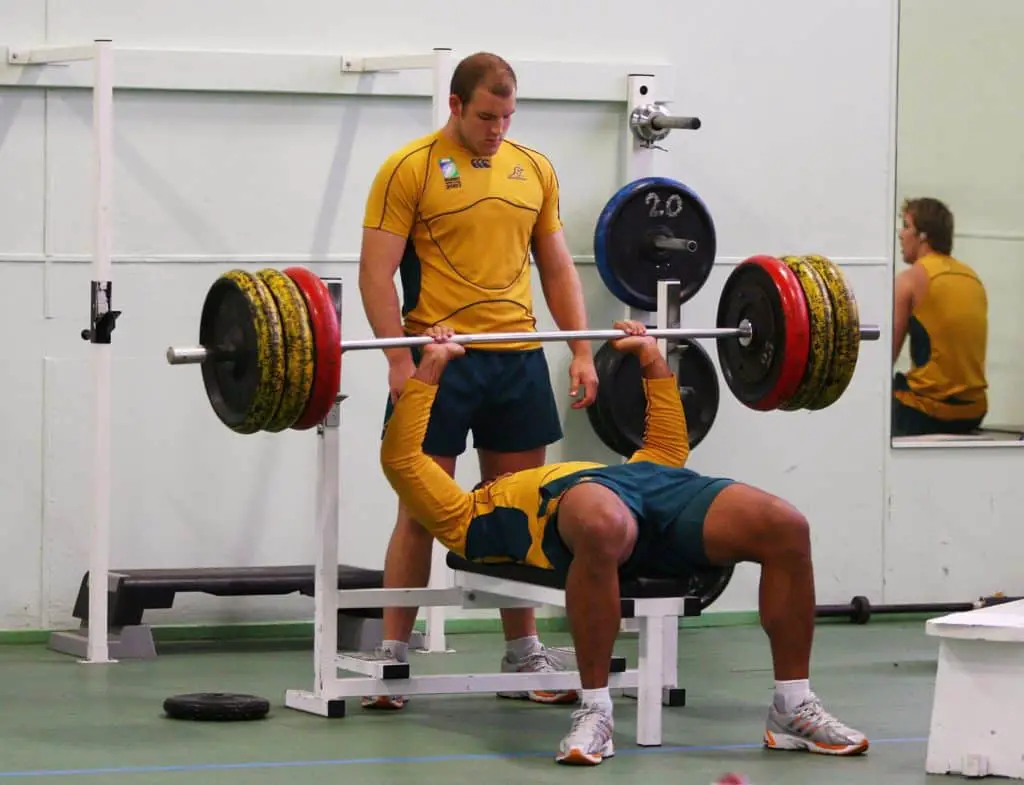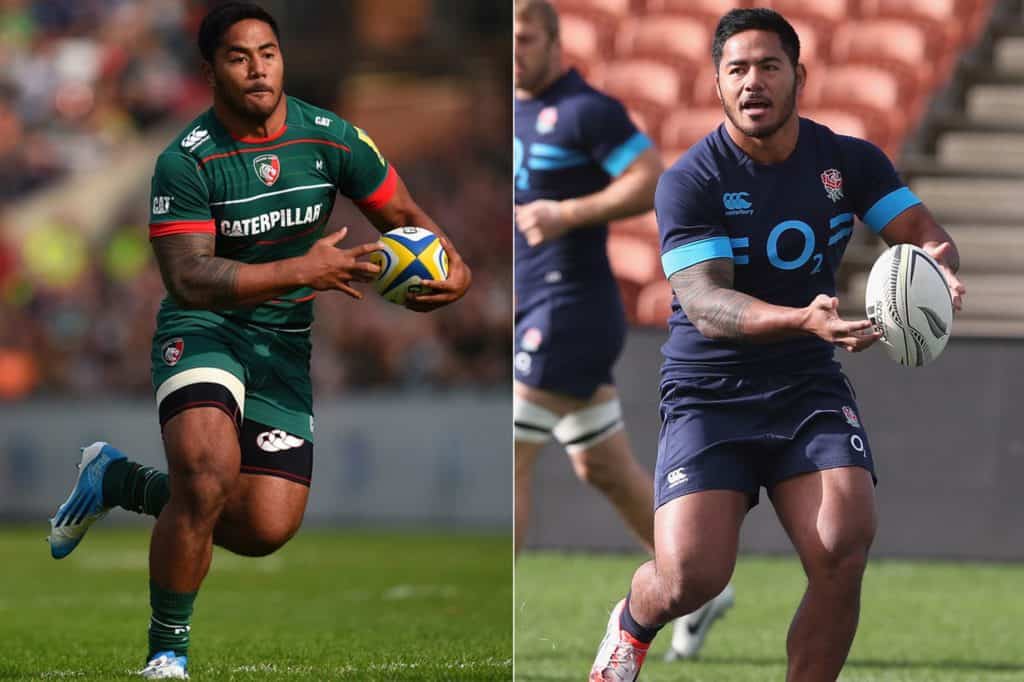
We all know that rugby is an intense game. A single match lasts for 80 minutes and requires a combination of speed and explosive bursts of power combined with running and strength endurance that keep players competing for the whole game. In this article we will look at some common rugby fitness standards and tests used to determine if a rugby player is fit enough to handle the workload of a match.
How fit do you have to be to play rugby?
You need to be very fit for rugby, here are the fitness standards you should aim to achieve. You should be able to bench press 1.5x bodyweight, squat 2x and deadlift 2.5x. You need to be able to run a sub 12minute 3km, achieve 13 on the beep test and sprint 40m in 5.3 seconds and 10m in 1.7 seconds.

There are many different ways to gauge a rugby player’s fitness level. As rugby requires strength, power, speed, and running endurance you need to use a variety of tests which test all these components of rugby.
Powerlifting movements are the most common way for coaches to test rugby players’ strength. Rugby athletes are expected to hit some very big numbers in bench press, squat and deadlift. Currently, rugby athletes are expected to bench at least 1.5x their body weight, squat 2x their body weight and deadlift 2.5x their bodyweight.
As the average rugby player weighs 100kg they must be able to bench 150kg, squat 200kg and deadlift 250kg. These are some very impressive numbers and can take athletes years of work in the gym to achieve.

Two good but simple tests of running endurance are a 3km run and the beep test. Both of these can be done on your own. The 3km is simply a timed run over a 3km distance. You run as hard as possible and record your time when you are finished. Rugby players are expected to run under 12 minutes which means you have to average a fairly quick 4minute per km pace.
The beep test is famous amongst rugby players. The test involves placing two cones 20m apart from each other and playing an audiotrack which tells you when to run, stop and recommence running. The track starts off slow but as it progresses through the levels it quickens. If a player fails to keep pace with the audiotrack they are eliminated.
Rugby players should be scoring at least 13 on this test. The beep test is good for rugby athletes because it is over 20m, a distance players regularly run and it mimics the stop start nature of rugby.
Speed is very important in rugby. Players need to sprint to be effective ball carriers, chase after the ball in open play and get into the correct position to defend. To test sprinting ability rugby players have their 10m and 40m sprints timed. Rugby players are expected to be fast and run the 10m sprint in 1.7 seconds and the 40m sprint in 5.3 seconds.

The aforementioned tests are some of the most commonly used in rugby. However, there are so many different tests that you can use to test your fitness. Here are some more tests you should try out to find out whether or not you are fit enough to thrive on the rugby pitch.
Welsh Anaerobic Test (WAT)
The WAT test was designed by the Welsh Rugby Union specifically to test the fitness of the Welsh national rugby side. To perform the test set up cones at 0m, 2m, 5m and 15m. At the start perform a burpee and then run in between the cones at 2m and 5m and then back between them. Once you run around the 2m cone then sprint to the cone at 15m and back to the starting line.
After you have completed the test rest for 40 seconds and then perform the same movement again. You need to run the test 10 times and add your times together, excluding the rest periods. Rugby forwards should finish the WAT test in 150 seconds while backs need to be quicker at 138 seconds.
Bronco Test
The Bronco test is like the beep test on steroids. It originally comes from New Zealand and requires you to set cones at 20m, 40m and 60m. To perform the test you have to run to each cone and back a total of 5 times. Athletes are allowed no breaks. Rugby backs should be completing the Bronco test in 4:40mins while forwards should aim to be done in 5mins.

Metabolic Fitness Index For Team Sports (MFITS)
This test requires a running track as you need to run a number of specific distances. To perform MFITS players must sprint for 100m, rest for 10 minutes, run 400m at maximum effort, rest for 20 minutes before finally running either 1500m or 800m at top speed.
1500m is more suitable for backs while 800m is better for forwards. Rugby backs should be completing the 1500m test in under 5:30 minutes while rugby forwards need to be stopping the clock under 3:00 minutes over 800m.
1km – 10X100m
This is another simple test that you can perform at your local rugby park. Remember, just because it is simple doesn’t mean it’s easy. You need to run ten 100m lengths as quickly as possible with no break. Head down to your local rugby pitch and run up and down the length of pitch and see how fast you can do it in. Backs should aim to complete the run in 3:20 mins, while forwards can be a bit slower at 3:40 mins.
Conclusion
If you want to dominate and achieve great success on the rugby field you need to be very fit. Rugby coaches have been putting players through a variety of fitness tests to determine whether or not they can handle the rigours of rugby.
If you want to determine your rugby fitness you should test your max lifts on bench press, squat and deadlift. You should also record your 3km run time, beep test level and your sprint times over 10m and 40m.
